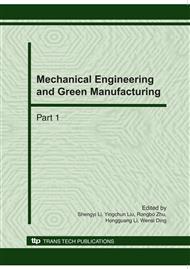p.1379
p.1383
p.1388
p.1393
p.1397
p.1402
p.1406
p.1415
p.1421
Effects of Heating Period of Time on Tensile Property of Plain Woven Fabric/Epoxy Resin Laminated Composites at High Temperature
Abstract:
The purpose of this paper is to investigate the tensile property of laminated epoxy resin composites reinforced by carbon fiber plain woven fabric with different heating period of time at relatively high temperature. For this purpose, the tensile tests of laminated resin composites are carried out at 150°C and 180°C with 15 minutes, 10 hours and 30 hours heating period of time, respectively. The reasons for the variations of tensile property of these composites with different heating period of time at 150°C and 180°C are analyzed. At 150°C and 180 °C,with heating period of time increasing the tensile strength of samples keep the same level. However at 180 °C the average tensile strength of samples is decreased by 14.95% compared with that at 150°C and the variation coefficient (CV) of tensile strengths at 180°C is much more than that at 150°C. These show that the tensile strength of resin laminated composites is sensitive at high temperature, although the tensile strength of resin laminated composites keeps the same level at same temperature with different heating period of time. The reason of the tensile strength of resin laminated composites decreased at high temperature is that resin has been damaged,which losing the adhesion of fiber and resin, so that these make resin and fiber can not bear the tensile load together. The research results will provide a basic reference for the application of plain woven fabric reinforced laminated resin composites with long using period of time at high temperature.
Info:
Periodical:
Pages:
1397-1401
Citation:
Online since:
October 2010
Authors:
Price:
Сopyright:
© 2010 Trans Tech Publications Ltd. All Rights Reserved
Share:
Citation:


